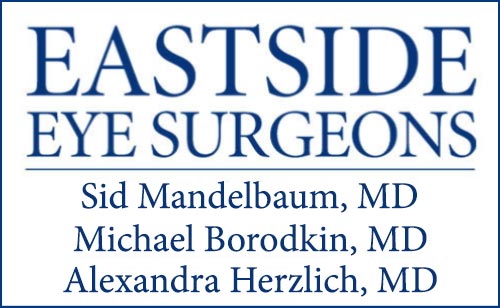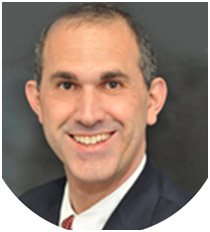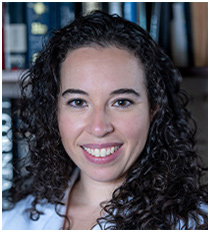Solutions for Cataracts & Cataract Surgery in New York
A cataract forms when the naturally clear lens of the eye becomes cloudy. It causes painless but progressive loss of vision. Other symptoms include glare, halos, needing more light to read, decreased color perception and frequent changes in eyeglass prescription. Cataracts are quite common among adults 60 and older; in fact, everyone will ultimately develop a cataract if they live long enough. Cataracts are generally caused by the natural aging process, but they can occur with certain medical conditions, after trauma, after intraocular eye surgery or after using certain medications.
There are no effective medical treatments for cataracts. Visually significant cataracts require surgery to improve visual function. We will assist you in determining the appropriate time in the course of your cataracts to proceed with surgery.
We perform surgical removal of the cataract and implant a replacement lens as an outpatient procedure in the operating room. During this procedure, the cataract lens is broken into small fragments and removed from the eye with an ultrasound probe through a microscopic incision in the front of the eye. The cataract is then replaced with a foldable, usually acrylic, lens implant to restore the function of the natural lens that was removed. Because of the small size and architecture of the incision, it is often self-sealing. Sometimes sutures are required or beneficial – they are tiny and do not cause any postoperative irritation. Surgery and the postoperative healing period are usually associated with only minor discomfort. Patients are usually able to resume normal activities within a day or two. The lens implant takes some time to stabilize within the eye, so optimal surgical recovery occurs within a month. Cataracts are typically present in both eyes. Surgery in the fellow eye may be required within several weeks or possibly not for years after surgery in the first eye.
We use advanced surgical techniques including small incisions and (in appropriate cases) laser-assisted technology. A variety of intraocular lenses are available for implantation during cataract surgery, including monofocal, multifocal and toric implants. Telescopic lenses are occasionally used for people with certain forms of macular degeneration. Each type of lens has certain advantages and disadvantages. We will discuss these with you prior to surgery and assist you in choosing the optimal implant for your particular circumstances. We are providing a brief general description of each of these lens types. Your specific ocular circumstances and visual goals will allow us to together determine the best choice for you.
Monofocal Single Vision Lens
This lens provides a clear image at a single distance. The implant power is selected to give good distance vision, mid-zone or near uncorrected vision, depending on your preference after consultation with the surgeon. This lens does not correct astigmatism. Glasses may be needed for optimum distance vision, near vision or both after surgery. The cost of this lens is covered by insurance and included as part of standard cataract surgery.
Astigmatism-Correcting (Toric) Lens
Advanced technology makes it possible to correct the cataracts that may be clouding your vision – and the astigmatism that may be distorting your vision – both at the same time. A toric intraocular lens implant is shaped and positioned in the eye so as to reduce or eliminate corneal astigmatism at the same time that it corrects for removal of the cataracts. The purpose is improved uncorrected vision due to reduced astigmatism and less dependence on eyeglasses. However, most patients still require glasses for some tasks. While the cost of the cataract surgery is typically covered by insurance, there is a surcharge for implantation of a toric lens that is not covered by insurance.
Multifocal Lenses
With this type of lens implant, light is focused from both distant and near targets simultaneously. Having multiple distances focused on the retina at once may help reduce one’s dependence on spectacles for a majority of activities, for both distance and near vision. These lenses somewhat compromise the clarity of distance vision to achieve some near vision. The multiple images they produce may result in a higher incidence of glare and halos. These lenses affect contrast sensitivity and are not good options for patients with diseases affecting the macular portion of the retina in one or both eyes. A number of different manufacturers and styles of these lenses are available. While the cost of the cataract surgery is typically covered by insurance, there is a surcharge for implantation of a multifocal lens that is not covered by insurance.
Are You a Good Candidate for Multifocal IOLs?
Perhaps the most important factor in determining if you are a good candidate for multifocal IOLs is your willingness to accept some compromise in the clarity of your distance vision for the convenience of being less dependent on computer glasses and/or reading glasses after cataract surgery.
If you're not willing to accept this type of compromise or your occupation requires that you have the best possible distance vision at all times or excellent night vision – for example, if you are a pilot or someone who spends a lot of time driving in unfamiliar areas at night – then you probably are not a good candidate for multifocal IOLs. You may be better-served with standard monofocal IOLs for optimal distance vision – even though this means you will need bifocals, progressive lenses or reading glasses to see clearly up close.
Also, if you have a pre-existing visual condition other than cataracts that affects your vision in one or both eyes (macular degeneration or an epiretinal membrane, for example), you typically will be happier with standard monofocal IOLs rather than multifocal IOLs, which require good visual capability in both eyes for the best results.
Laser-Assisted Cataract Surgery
Laser-assisted cataract surgery is sometimes called “femtosecond cataract surgery” or “femtosecond-assisted cataract surgery.” Using laser assistance during cataract surgery allows for a more gentle and precise approach in which the laser performs many of the steps that otherwise must be done manually. Specifically, the laser can be used to create the opening in the capsular bag, which contains the lens and can be used to soften the lens, thus requiring less ultrasound energy to break up the lens in the eye, resulting in less potential damage to the cornea. The laser-assisted technique may be particularly beneficial in patients with Fuchs’ corneal dystrophy or cataracts that have become very advanced or white (mature).
In patients with corneal astigmatism, the laser can be used to make incisions in the cornea that may reduce or eliminate the astigmatism, thus decreasing the reliance on glasses or contacts. In patients who do not have enough astigmatism to require a toric intraocular lens but enough that they will still require glasses or contacts, the femtosecond lens is a great option to eliminate the astigmatism.
Furthermore, for the best visual outcomes with toric and multifocal IOLs, the exact placement of the lens inside the eye is critical – more critical than when a monofocal IOL is used. Use of a femtosecond laser during certain steps in cataract surgery can help us better position the toric or multifocal IOL to take full advantage of the lens design for optimal vision.
We feel it is important to stress that everyone’s eyes and visual needs are different. After thoroughly evaluating your ocular situation and discussing your visual goals, we will explain the benefits and limitations of the available lens implants for your specific case and help you select the best option.
Discover comprehensive care for cataracts by calling 212-650-0400 or using our convenient Request an Appointment form. Our catarace patients come to us from Scarsdale, Chappaqua and Manhattan, New York, Newark, New Jersey, Greenwich, Connecticut and close-by areas.








